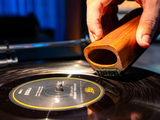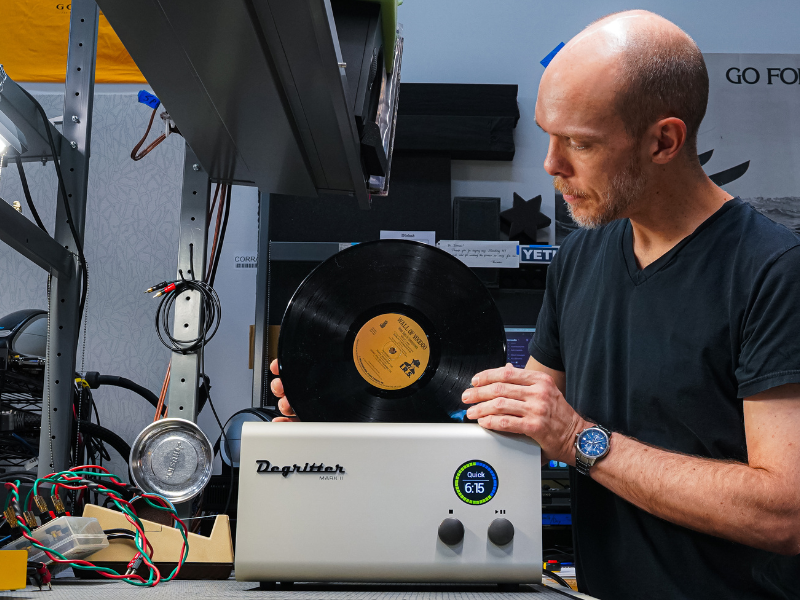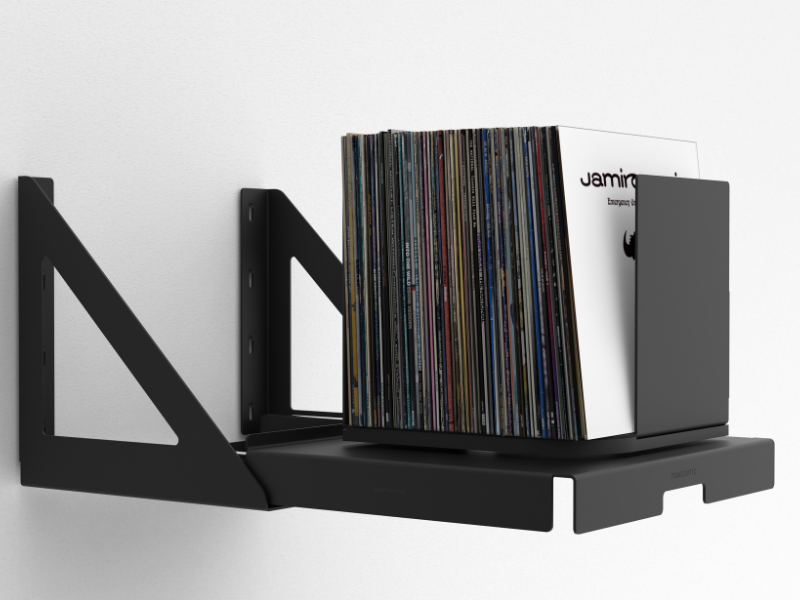The Audiophile’s Guide to Record Care

The Ritual of Vinyl
Vinyl becomes a part of your life, or for some, it becomes their life. It's the thrill of the hunt, its the its the endless education through reading liner notes, and for most, I truly believe vinyl is the last physical connection to music outside of pressing the play button, or picking up a pair of drumsticks and pissing off your neighbors. Although with the right amp and speakers, you can accomplish that too.
Cleaning records is just as much a part of the hobby as the hunt. There’s something about pulling a record from its sleeve, setting it on the platter, and lowering the stylus that feels more like a ritual than pressing play on a streamer. It’s about the whole experience.
A well-loved record can outlast you. A neglected one? It can be ruined in a single careless play, and so can your stylus. This guide is designed to help you maintain your collection and system in optimal condition.
Why Record Care Matters
Vinyl is physical. When you first crack the seal, it has that distinctive new vinyl smell, and it looks like a shiny black mirror. But cleaning records is incredibly important, even new records.
Every groove carries not only the music, but also the possibility of wear and tear. Dust, fingerprints, static, and scratches are not only cosmetic annoyances but also sonic ones. And that record can be a diamond in the rough you find at a yard sale, or a new record that traveled the factory floor, and sealed a bit of the factory air and dust in the packaging with your new music. Think of every spec of dust on a record, like a rock on the highway, and you stylus is a Lamborghini traveling on a road barreling towards those rocks. How long are those tires going to last?
Poorly maintained records:
- Add pops, clicks, and distortion.
- Shorten the lifespan of your stylus.
- Lose their resale value.
Proper care protects the record and your gear, ensuring your system performs at its best, for a long time, not just on the first spin.
Handling Records the Right Way
The number-one rule? Always handle records by the edge and the label. Oils from your fingers can permanently etch into the surface, adding noise that no cleaning can fully remove. Never touch the grooves. I tend to remove records from the sleeve by reaching in, putting my foreigner on the label, thumb on the edge, and then pulling the record from the sleeve.
A few simple habits go a long way:
- Keep a clean surface ready before setting a record down.
- Use inner sleeves made from anti-static, archival-safe materials.
- Replace paper sleeves, which shed dust, with poly or rice-paper liners.
Cleaning Basics: Before and After Every Play
Think of it like brushing your teeth, a quick clean before and after every spin. A carbon-fiber brush is the tool of choice here. It pulls dust out of the grooves and helps reduce static.
For stubborn static, some audiophiles swear by tools like the Milty Zerostat gun. It looks a bit wild, but it works. In extreme cases, you can actually see the dust release its cling to the record with the ole Zerostat gun.
Deep Cleaning: When a Brush Isn’t Enough

Over time, surface dust gives way to deeper grime. That’s where wet cleaning comes in. You can go simple with a spray-and-wipe kit, but the real game changers are record cleaning machines.
- Vacuum-based machines (like Knosti, VPI, Pro-Ject or Okki Nokki) scrub and suck dirt out of the grooves.
- Ultrasonic machines (like Degritter) use cavitation bubbles to lift out debris without touching the record at all.
Both methods can make a used record sound shockingly close to new.
Storage and Environment
Records are happiest standing tall. Never stack them flat, as the weight can cause the vinyl to warp. Store vertically, snug but not crammed. They may not warp immediately when stored incorrectly, but trust me, over time, they will. After all, records are plastic; we can keep calling it vinyl, but it's just glorified PVC.
Other golden rules:
- Keep them out of direct sunlight and away from heat.
- Aim for a calm, stable environment with a temperature of around 65–70°F and moderate humidity.
- Protect jackets with outer sleeves to preserve artwork.
Pro Tip: The Shelves Everyone Has
Alright, I’ll be that guy. If you’ve ever scrolled through audiophile system photos and wondered, Where do they all get those perfectly sized record shelves? The ones where every cube fits LPs like they were designed for it?
Yeah, it took me a bit to figure that out. They’re IKEA shelves, from a series called Kallax. Not expensive, straightforward, and essentially perfect for this hobby.
Or, If You Want to Show Off…

On the other end of the spectrum, there’s the Toneoptic RPM shelf — a wall-mounted display that actually rotates your records forward when you pull one out. It’s part storage, part art piece, and all conversation starter. Not cheap, but if you want to make flipping through your collection feel like stepping into a gallery, this is it.
Don’t Forget the Stylus
A dirty stylus is like a dirty paintbrush; it smears detail and wears out faster. Keep a stylus brush or gel pad handy, and gently clean it every few uses. Be incredibly picky about the type of gel pad you use; do thorough research. There are numerous versions out there created for a quick buck, but they end up leaving some of that sticky residue on your stylus.
For Pete’s sake, don't use an air cleaner! The aerosol will absolutely melt your stylus if it's even in the vicinity of your stylus, even if you're spraying the rest of the table to clean off dust. (I may know a guy who did this.)
A clean stylus equals cleaner sound and longer record life.
Pro Tips for Going the Extra Mile
- Consider using a static-dissipating mat or recording weight for added stability.
- If you live in a dry climate, a room humidifier can reduce static.
- Re-sleeve records that came in cheap paper inners — your collection deserves better.
The “LAST” Step in Record Care
One product that’s been quietly earning respect for decades is LAST Record Preservative. The company has been around since the late 1970s, and its formula is designed to bond at the molecular level with vinyl, reducing wear and extending the life of both record and stylus.
I first noticed it when a friend dropped the needle on a pristine copy of Dark Side of the Moon. The record sounded shockingly quiet, almost new, then I spotted the small “LAST” sticker on the sleeve. That sent me digging into what it was all about.
Let me see if I can get this right. Quite frankly, I'm no scientist. When you apply the preservative, it hardens the plastic about 10 microns deep, or 10 molecular layers below the surface. This effect is expected to last for up to 200 plays, according to LAST.
I’m a fan now, and I keep it handy for the albums I know are going to see heavy rotation. It’s pricey, so maybe not something you need on every thrift store find, but on your favorite pressings? It’s a game-changer.
Closing the Loop
Record-keeping can feel like busywork to some, but most of us incorporate it into our scenario because it becomes just as much a part of the ritual as dropping the needle. It’s part of the joy of the format, the quiet, deliberate steps that make dropping the needle feel special. With a little effort, your records can sound as alive decades from now as the day you bought them.
Hear More. Learn More. Love Your System More.
Join thousands of music lovers who get weekly guides, expert insights, and exclusive offers from The Music Room.
